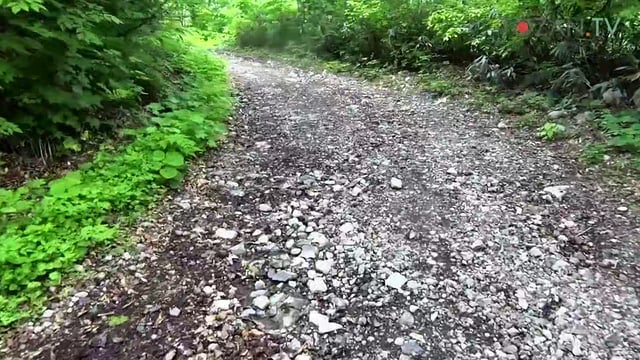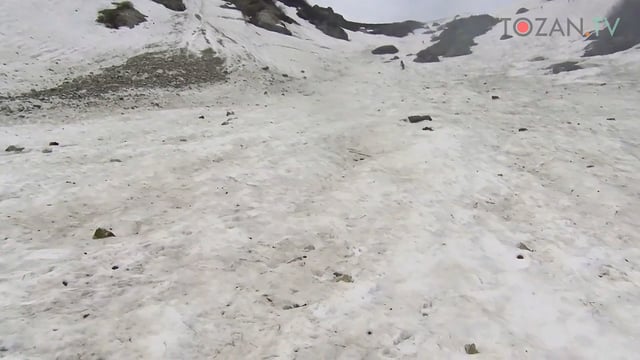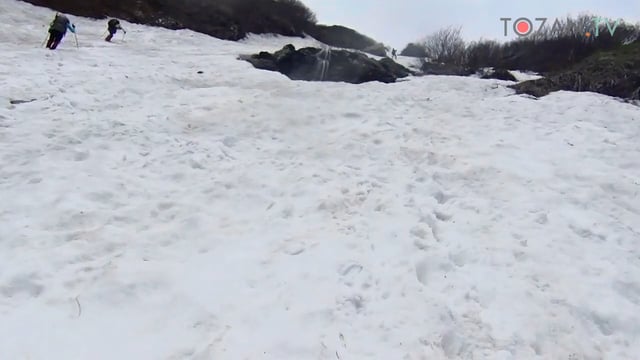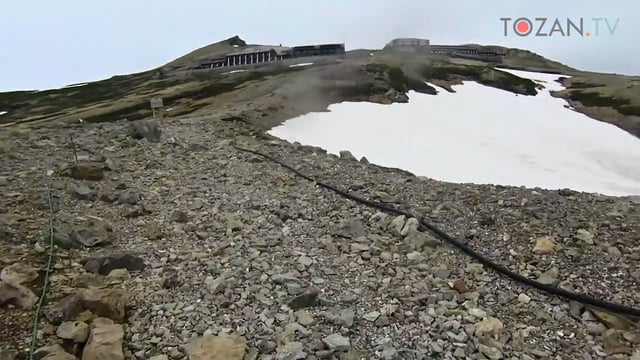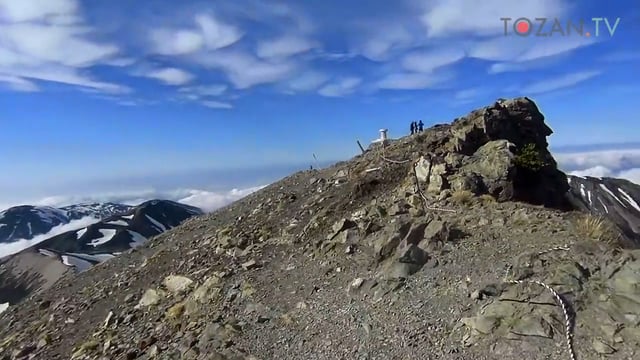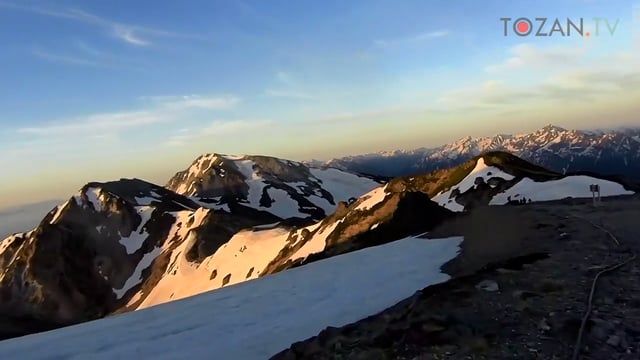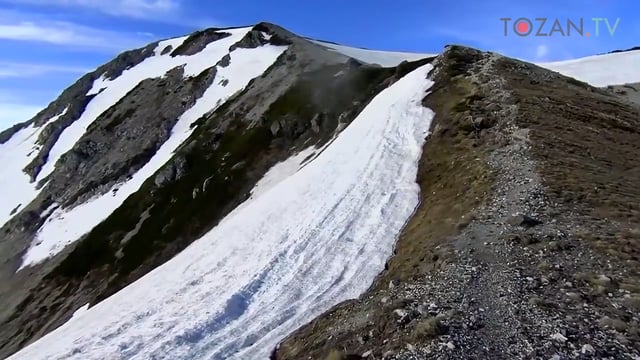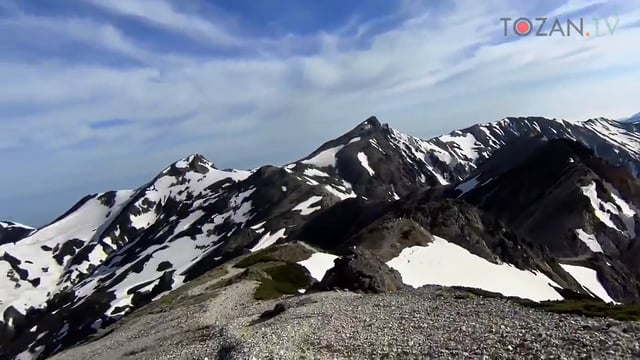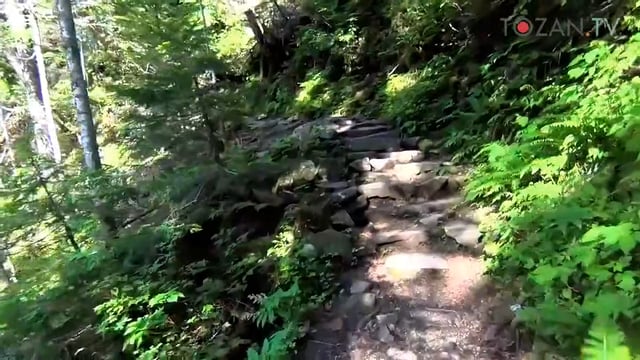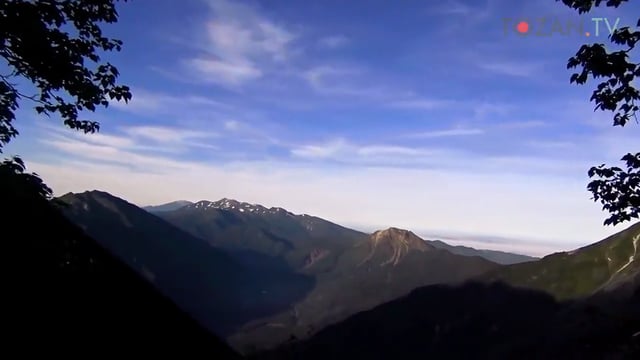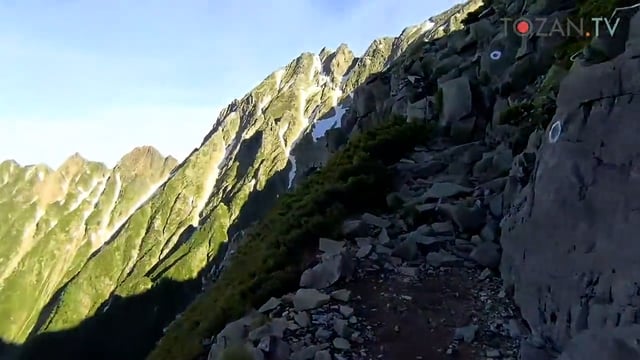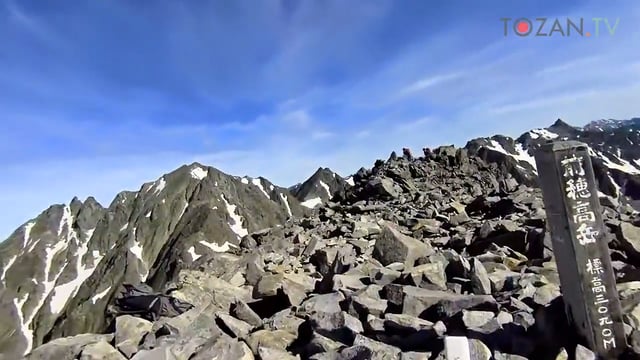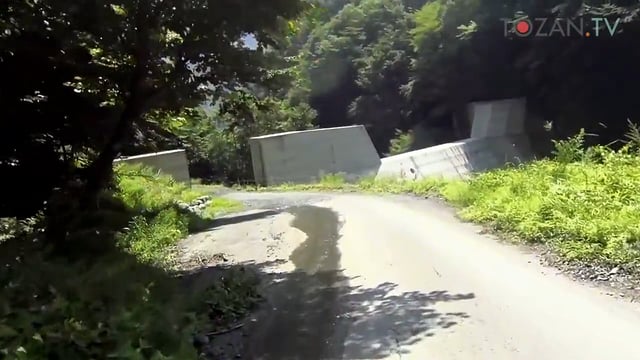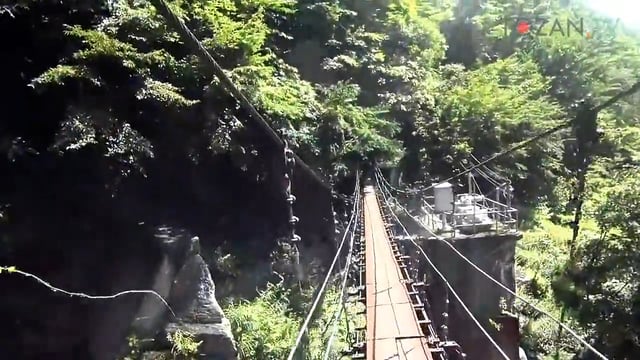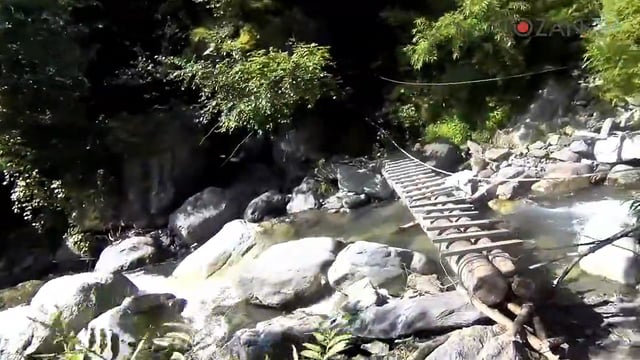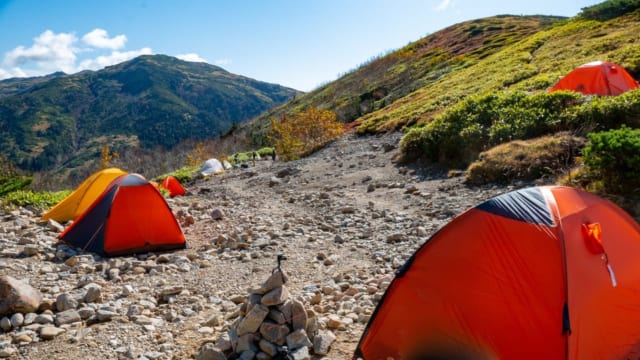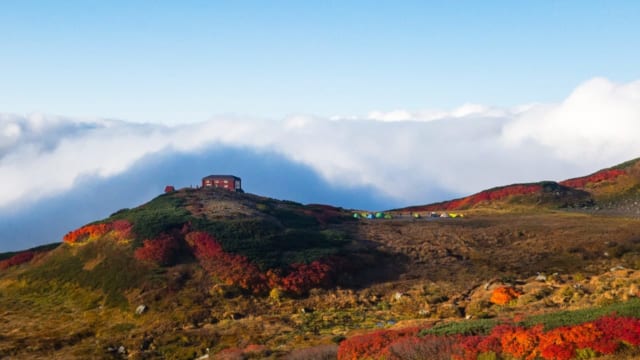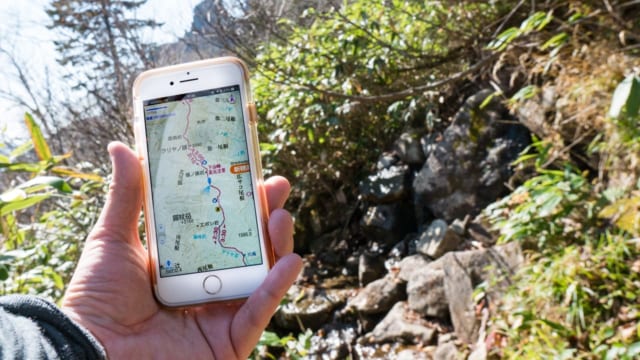| Time | Event |
|---|---|
| 00:14:45 | Kani-no-yokobai (chain no.10) |
| 00:16:30 | the core of Kani-no-yokobai |
| 00:18:45 | an iron ladder |
| 00:26:14 | Heizou-no-col (chain no.11) |
| 00:29:32 | Heizou-no-zuko (chain no.12) |
| 00:38:48 | reached Heizou-no-zuko |
From the summit of Tsurugi-dake to Heizou-no-zuko
I monopolized a great view of Tsurugi-dake1 that was blessed with fine weather for a while. In the descent, Kani-no-yokobai2 that is the biggest hurdle would be coming soon. Kani-no-yokobai is horizontal translation in the meaning of this word, but it’s alomost vertical translation as well as Kani-no-tatebai3. Kani-no-yokobai is not short, and the place where goes around a curve is core of Kani-no-yokobai. You need to step forward with your left leg into indistinct footing.
- 剱岳(つるぎたけ). "剱" is the meaning of a sword ("剣" is used in general). Tsurugi-dake is one of the most famous mountain as a sanctuary of rocks and snow in Japan. A lot of hikers long for hiking here. ↩
- 蟹のよこばい(かにのよこばい). "蟹" is the meaning of a crab. "たてばい" means crawling horizontally. The person who climb down Kani-no-yokobai looks as if a crab crawls horizontally. But its translation is vertically rather than horizontally. ↩
- 蟹のたてばい(かにのたてばい). "蟹" is the meaning of a crab. "たてばい" means crawling vertically. The person who climb on Kani-no-tatebai looks as if a crab crawls vertically. ↩










